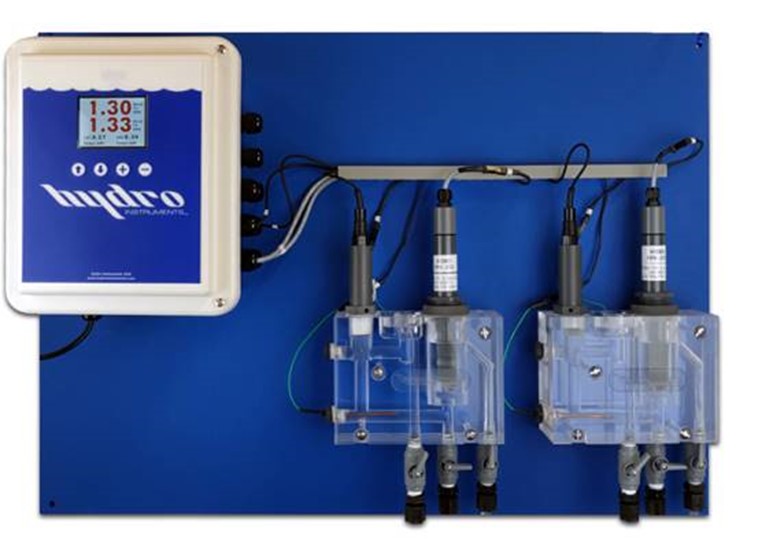The RPH-260 residual analyzer offers a variety of probe and measurement options spanning various applications. The system can be provided with a maximum of two each of disinfectant probes, pH probes, and temperature sensors.
NOW with Large color Graphical display (320 x 240 pixels) and trending charts!
Sample Water Flow
- 4-8 gal/hr for open flow cell
- 12-24 gal/hr for F3 probe with CEH-F3 cleaning head
Sample Pressure
- 5 PSI for open flow cell
- 15 PSI for F3 Probe with CEH-F3 cleaning head
Sample Supply: Continuous
Speed of Response: Dependent on probe selected
Resolution: 0.01 ppm or +/- 1% of range (whichever is larger)
Main Features
- Available with one or two disinfectant probes for free chlorine, total chlorine, and various other probe types.
- Does not use chemical reagents
- Available with zero, one or two pH sensors
- Available with one or two temperature sensors
- Available with pH and temperature compensation without the need for buffer chemicals.
- Open or pressurized flow cell depending on probe type
- Controller features graphical color 320 x 420 pixel display
- Four selectable 4-20mA analog outputs
- Four Selectable alarm relays
- Optional data logger on MicroSD card
- Modbus RS-485 communication


